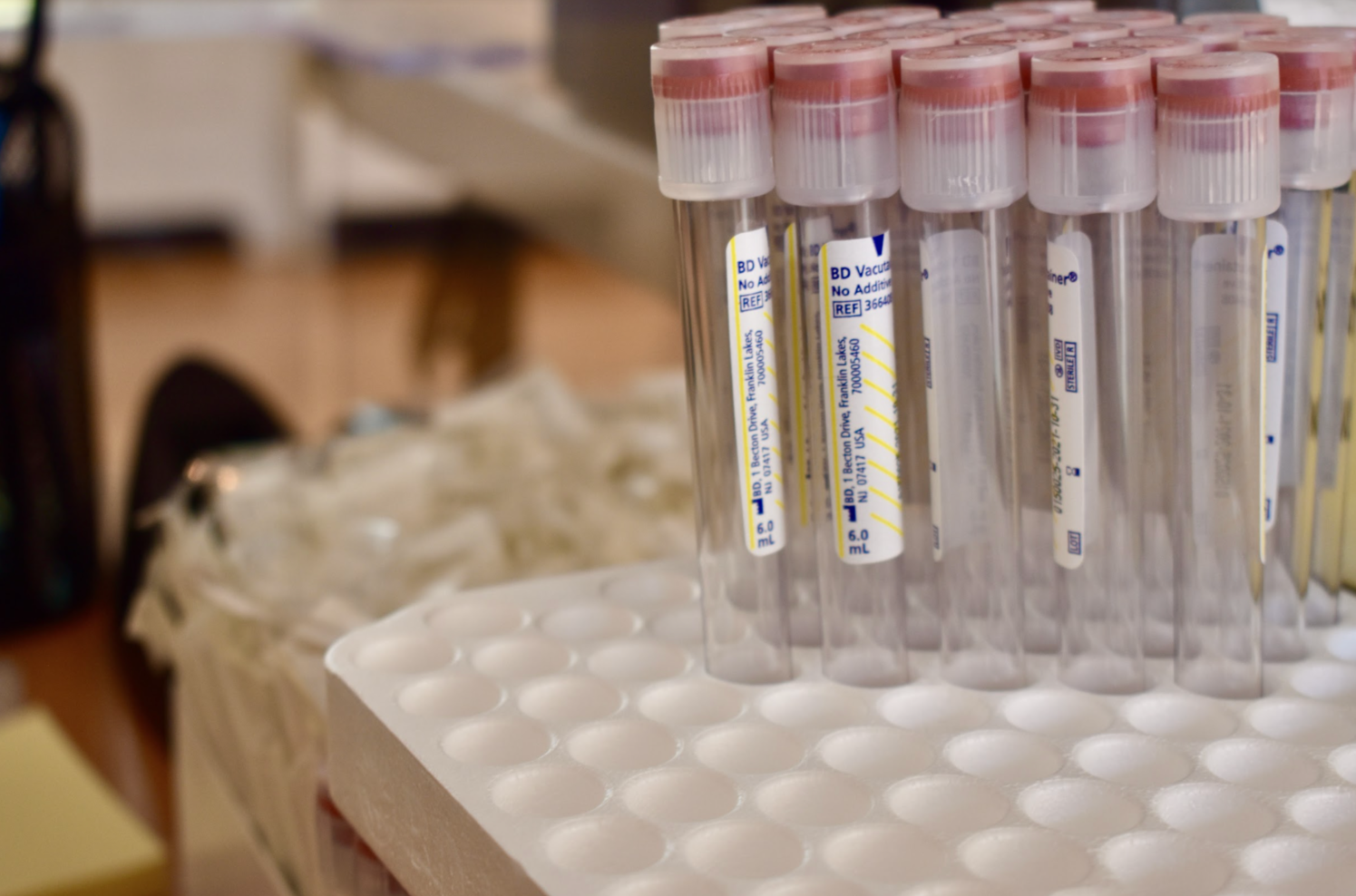
Courtesy of Regina Sung
Before bringing students to campus last fall, Yale made a COVID-19 dashboard to track case counts among students, faculty and staff.
Throughout the year, Yale employed a color-coded alert system to relay the risk of COVID-19 on campus and inform mitigation protocols. The positivity rate on campus and in the surrounding community, available isolation and quarantine capacity and other factors informed the alert level. Throughout the year, Yale mostly fluctuated between yellow and orange alert levels, remaining in orange from November to April. By the end of spring term, the risk had lessened and Yale switched to a yellow alert level. The University had 396 cases during the fall term and 522 during the spring term, and employed measures to control outbreaks such as asymptomatic screening, arrival quarantines, contact tracing, mask mandates and social distancing.
Out of 171,247 tests performed at the University during 2021, 457 tests yielded a positive result. This meant the University had a 0.38 percent positivity rate overall. The first positive case at Yale was an asymptomatic undergraduate student who was immediately transferred to isolation housing.
“Protocols in place for bringing students back to campus are working as they should,” Dean of Yale College Marvin Chun wrote in an email to students after the first positive case on Aug. 26. “Nevertheless, this is a moment to stress the importance for everyone in the community to comply with testing and quarantine requirements; follow the practices of physical distancing, frequent hand washing and wearing face coverings; and abide by the terms of the community compact.”
Compared to other colleges, Yale suffered fewer early outbreaks. For example, the University of North Carolina-Chapel Hill saw 130 positive cases within the first week of the academic year, while the University of Alabama saw 500 positive cases.
On Sept. 30, 2020, University COVID-19 Coordinator Stephanie Spangler sent an email to the community detailing the University’s shift from a yellow alert level to green, the lowest level of risk, due to a low rate of viral infection within students’ campus arrival period. Spangler cited the community’s strict adherence to public health protocols for the basis behind the low virus transmission rate. The green alert level denotes that the capacity for on-campus spaces is at 50 percent or less and classes are a hybrid of in-person and online learning, while individuals still practice public health safety measures.
The green level signalled that the campus was at a decreased risk and that cases were infrequent and could be controlled. Sten Vermund, dean of the School of Public Health, attributed the community’s low transmission rate during the arrival period to five factors: mask-wearing, physical distancing, hand hygiene, small group gatherings and indoor air filtration. Vermund also emphasized the benefits of frequent testing that allowed for contact tracing of infected individuals.
At that point, the University had only seen 27 positive cases since Aug. 1, 2020. But the green alert level changed back to yellow within two weeks, after a cluster of 18 positive cases emerged on the men’s ice hockey team on Oct. 13. The COVID-19 dashboard reflected these new positive cases, representing a record one-day high –– the majority of the positive test results that day were from off-campus undergraduates. The team had 19 members enrolled and living in New Haven.
Spangler sent a University-wide email detailing Yale’s efforts to contact trace and quarantine the exposed and infected team members. But returning to a yellow alert level meant new measures to control virus transmission, including targeted quarantines of specific buildings or residential colleges and restrictions on campus access. The University also halted all in-person training for varsity athletic teams and intramural programs and closed down athletic facilities for cleaning.
At the end of the fall semester, the University had seen 51 positive cases. In November, the alert level was changed to orange, meaning moderate risk. Three residential colleges were placed under quarantine. Due to a 20-person COVID-19 cluster spanning Saybrook, Davenport and Grace Hopper colleges, administrators put the colleges in targeted in-suite quarantines on Nov. 6, 2020 through the end of the term.
By the spring term, the University saw its highest case counts, but had the promise of COVID-19 vaccines for students. On March 15 and 16, off-campus undergraduates saw a spike in positive tests. According to Chun, the University’s contact tracing system was responding to the “clusters of potential infection.”
Chun also noted on Mar. 11 that the infectious B.1.1.7 variant, which has an approximately 50 percent increased rate of transmission and potential increased severity, had been identified in the community. This variant is known as the “U.K. variant” and the CDC says that the presence of this variant “warrants universal and increased compliance with mitigation strategies, including distancing and masking.”
The spring term also presented more positive cases within the same time period compared to the first semester. Chun called for the community to practice greater fidelity to preventative measures in light of these statistics.
But by April 1, Connecticut residents over 16 became eligible for the COVID-19 vaccine. Once students became immunized, case counts fell. On April 29, Spangler sent a message to the community signaling the University’s move to a yellow alert level from orange, citing New Haven’s favorable transmission rates and increasing levels of vaccination.
The News also tracks COVID-19 cases here.







